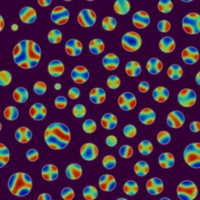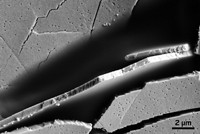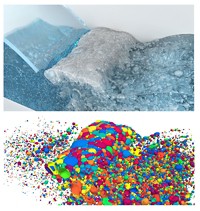Advertisement
Grab your lab coat. Let's get started
Welcome!
Welcome!
Create an account below to get 6 C&EN articles per month, receive newsletters and more - all free.
It seems this is your first time logging in online. Please enter the following information to continue.
As an ACS member you automatically get access to this site. All we need is few more details to create your reading experience.
Not you? Sign in with a different account.
Not you? Sign in with a different account.
ERROR 1
ERROR 1
ERROR 2
ERROR 2
ERROR 2
ERROR 2
ERROR 2
Password and Confirm password must match.
If you have an ACS member number, please enter it here so we can link this account to your membership. (optional)
ERROR 2
ACS values your privacy. By submitting your information, you are gaining access to C&EN and subscribing to our weekly newsletter. We use the information you provide to make your reading experience better, and we will never sell your data to third party members.
Surface Chemistry
Chemistry In Pictures
Chemistry in Pictures: This is what a cycloaddition looks like
by Manny I. Fox Morone
February 23, 2021
![A scheme showing side-by-side views of molecules and atomic force micrographs showing two reactants and a reaction product a pentacene molecule, a indeno[1,2,3-cd]fluoranthene molecule, and an as-indaceno[2,3-b:6,7-b′]ditetracene. A scheme showing side-by-side views of molecules and atomic force micrographs showing two reactants and a reaction product a pentacene molecule, a indeno[1,2,3-cd]fluoranthene molecule, and an as-indaceno[2,3-b:6,7-b′]ditetracene.](https://s7d1.scene7.com/is/image/CENODS/20210223lnp20-graphic?$responsive$&wid=700&qlt=90,0&resMode=sharp2)
Anyone who has stayed up late collecting NMR data for a molecule of interest would agree: it’d be nice if you could just see the thing. That’s one advantage of the surface chemistry work being done in Antonio Echavarren’s and Szymon Godlewski’s labs at the Institute of Chemical Research of Catalonia and Jagiellonian University, respectively. Another advantage to reactions on these metal surfaces—a 370 °C single-crystal gold surface in this case—is that they can produce molecules that can’t currently be made easily in solution in a flask. Here, atomic-force micrographs show the reactants and a large polycyclic product of a dehydrogenative Diels-Alder reaction; both the larger reactant and the product would be difficult to dissolve and incorporate into solution chemistry.
Credit: Rafal Zuzak. Follow @Echavarren_Lab and @SPMLabJUK on Twitter. Read the ACS Nano paper: 2021, DOI: 10.1021/acsnano.0c08995
Do science. Take pictures. Win money. Enter our photo contest here.





Join the conversation
Contact the reporter
Submit a Letter to the Editor for publication
Engage with us on Twitter